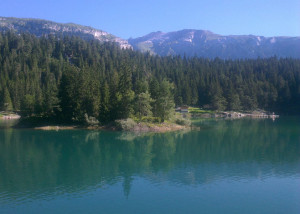Dive Operators Use Music, Not Chum, To Attract Great White Sharks

Shutterstock
Metalhead Sharks
Could great white sharks be attracted to rock music?
Humans might not be the only ones head-banging to heavy metal — sharks might enjoy the jams too.
While filming the documentary Bride of Jaws, part of Discovery Channel’s Shark Week, the film crew was searching for a 16-foot great white shark known as Joan Of Shark. Matt Waller, owner of Australian dive operator Adventure Bay Charters, suggested playing heavy-metal music through an underwater speaker in order to attract the shark to their location. Much to the documentary team’s surprise, it worked. Although they didn’t find the giant they’d set out for, two large great whites soon appeared to investigate the music of Darkest Hour, a metal band out of Washington, D.C.
Waller developed this attraction technique in 2011. Tales of music altering shark behavior in Isla Guadalupe inspired him to mount underwater speakers to his shark cages, and he discovered that he could attract sharks by blasting classic hits such as AC/DC’s “You Shook Me All Night Long” and “Back in Black.” He also noted that the sharks behaved differently while music was playing; they became more inquisitive, sometimes rubbing their faces against the speaker.
Waller doesn’t consider himself a shark expert, but he believes that the thick tones used in heavy metal, such as vocalists’ “death growls,” intense drum beats and guitar riffs, mimic the low-frequency noises created by injured fish. Sharks sense the fish frequencies with their lateral line, a sensory organ that runs along the length of their bodies that detects vibrations and changes in pressure. There haven’t been any scientific studies to prove this theory, so it’s possible that sharks just enjoy the chance to rock out.
Craving More Shark Tales? We’ve Got You Covered
Find out What It’s Like to be a Shark Week Videographer
Dive Operators Use Music, Not Chum, To Attract Great White Sharks Read More »

 Unusually, this lake is fed by underground sources rather than a river or rainfall.
Unusually, this lake is fed by underground sources rather than a river or rainfall. 

